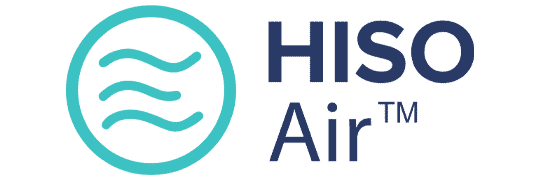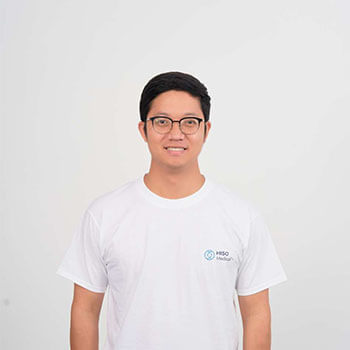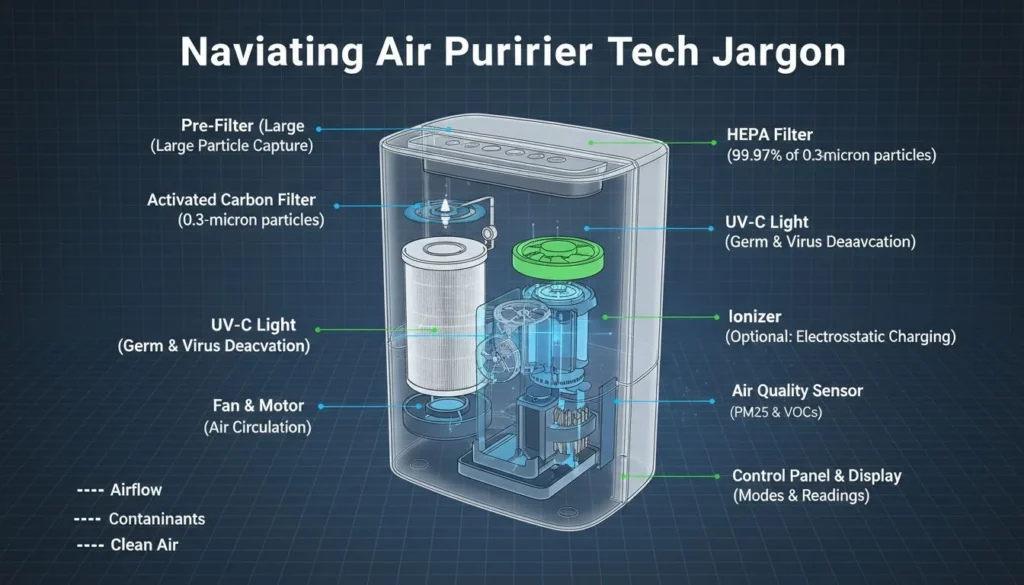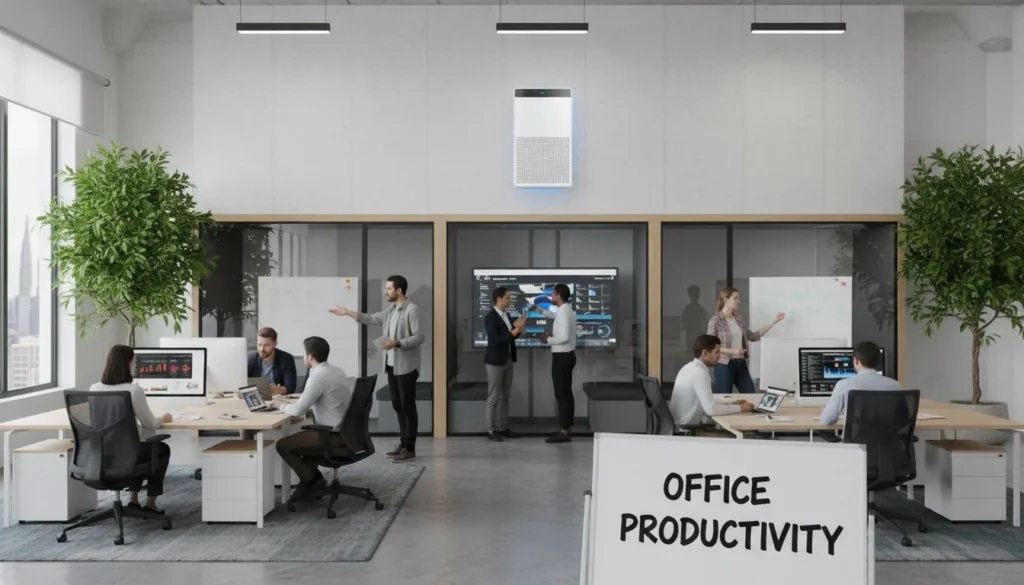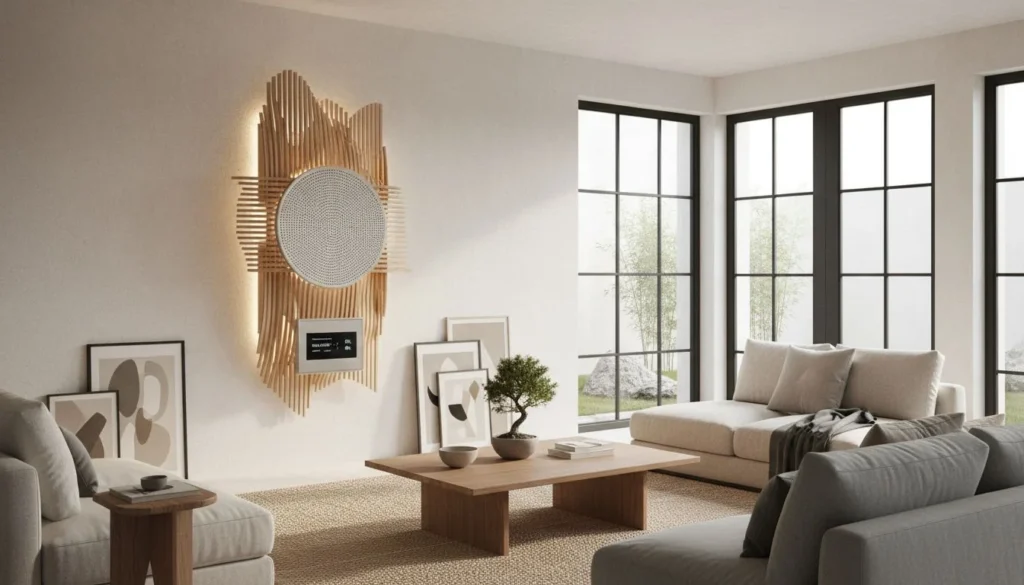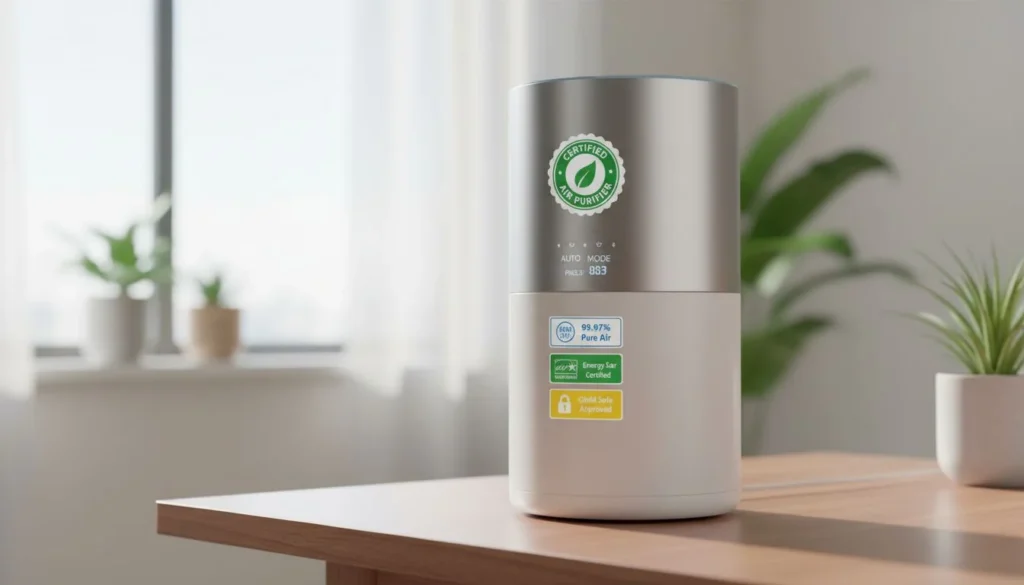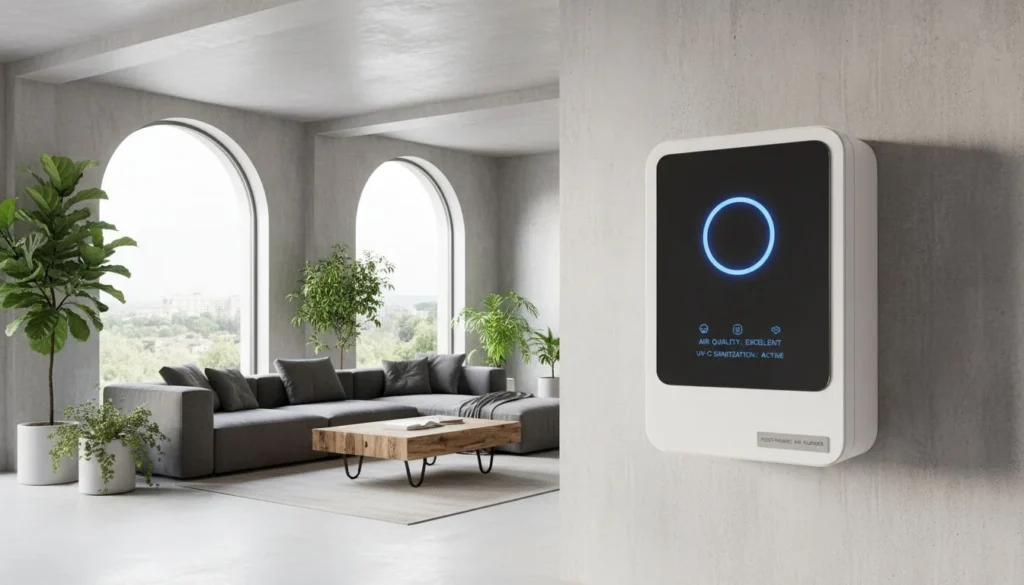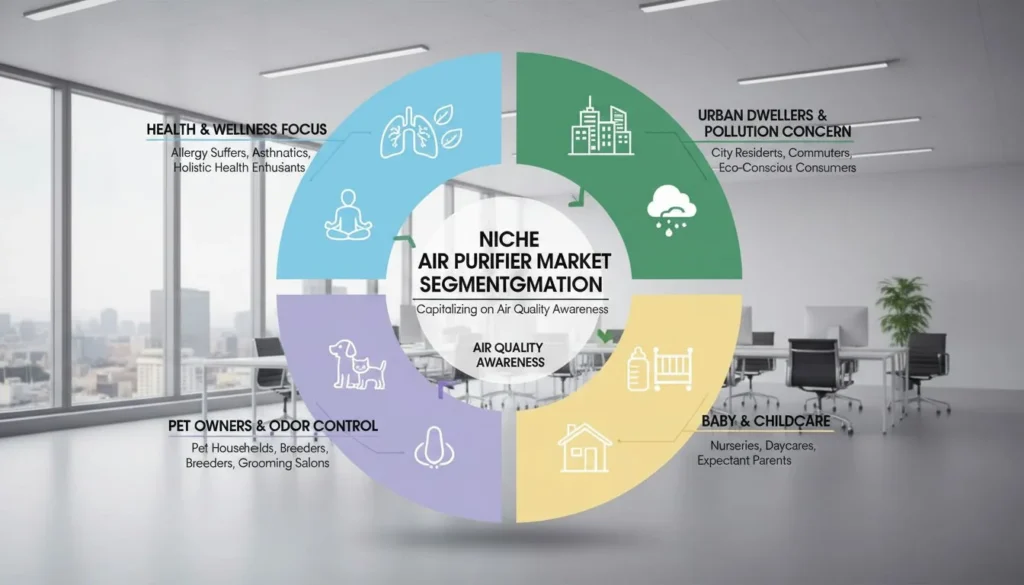As air quality awareness continues to rise across the European Union, the market for air purifiers is expanding rapidly. For EU-focused brands, selecting the right manufacturing location has become a strategic decision that affects unit economics, supply chain agility, and regulatory compliance.
This blog offers a comparative analysis between Poland and Turkey—two of the most attractive nearshoring options for air purifier manufacturing—with a focus on Total Landed Cost e Lead-Time.
Poland vs. Turkey: Strategic Manufacturing Philosophies
Choosing between Poland and Turkey is not merely about cost—it's about strategic alignment.
- Poland represents the “Integration Model”: full access to the EU single market, regulatory simplicity, and logistical speed.
- Turkey offers the “Gateway Model”: lower costs, broader geographic reach, but higher macroeconomic and geopolitical complexity.
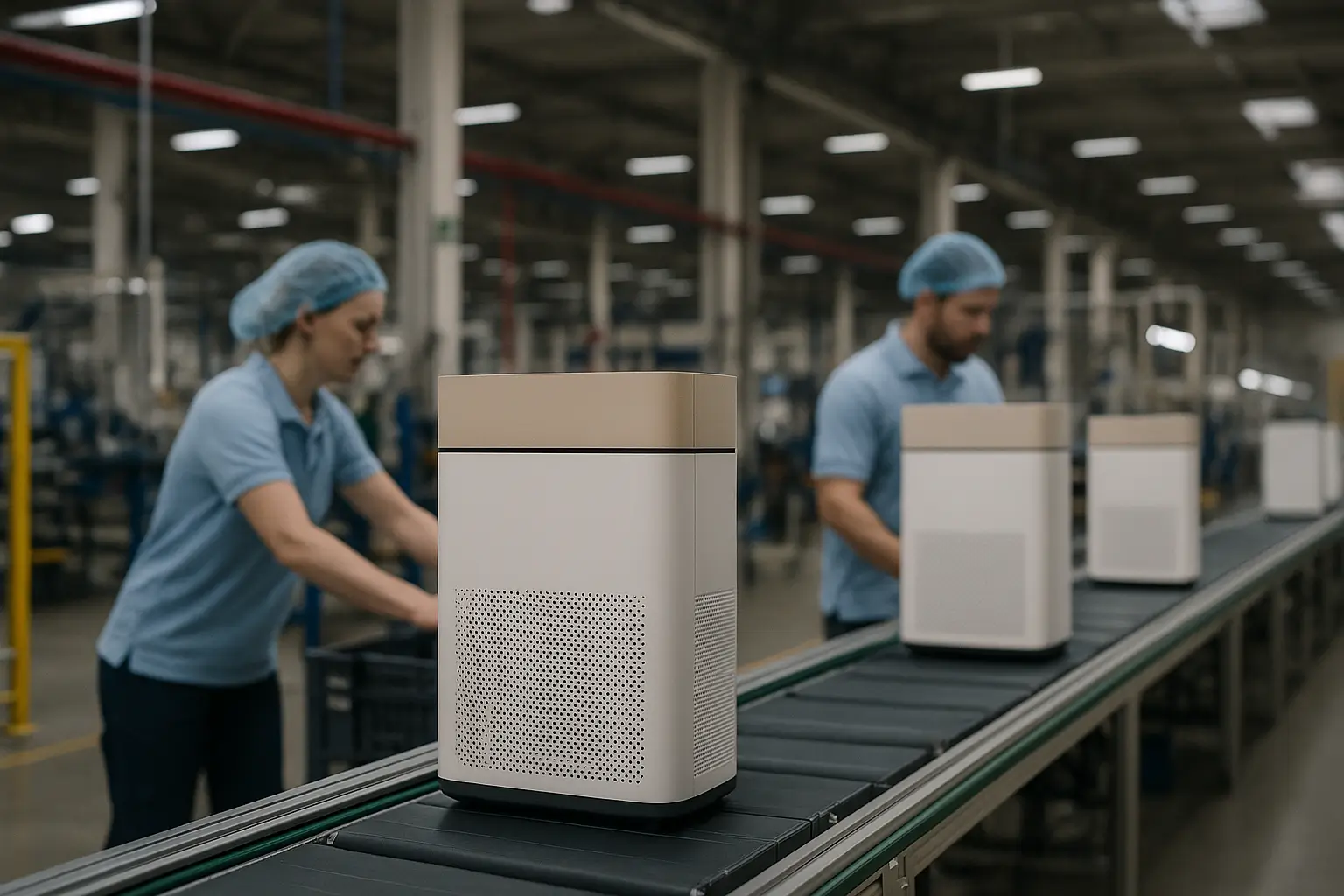
Cost Analysis: Headline Savings vs. Total Cost of Risk
Custos de mão de obra
When evaluating manufacturing locations, labor costs are often the first point of comparison. Turkey generally presents a lower headline cost for labor compared to Poland. As of January 2025, the minimum monthly gross wage in Turkey was approximately 26,005.50 Turkish liras, which translates to around $730.31 USD [6]. The Labour Cost Index in Turkey reached 913.30 points in Q1 2025, indicating an upward trend [1]. While unit labor costs in Turkish manufacturing have historically been low, the rapid increases in minimum wage and overall labor costs due to high inflation and currency volatility introduce significant unpredictability for long-term planning [1, 6].
In contrast, Poland's average hourly labor cost in manufacturing was estimated at €17.30 in 2024, positioning it as a low-cost workforce leader within the EU [7]. While higher than Turkey's direct costs, Poland's labor market offers greater stability. The Labour Cost Index in Poland reached 170.93 points in Q1 2025, showing a steady increase but without the extreme volatility seen in Turkey [8]. For EU-focused brands, the predictability of labor costs in Poland can outweigh the initial lower figures in Turkey, especially when considering the total cost of risk.
Energy Costs
Energy costs are a critical factor for manufacturing, particularly for energy-intensive processes like those involved in producing air purifiers. Turkey has often been highlighted for its competitive industrial energy prices. However, recent data indicates rising trends. For instance, natural gas prices for industrial consumers in Turkey increased by 7.86% in July 2025 [11]. While industrial electricity prices have fluctuated, with an average of 0.310 USD/kWh in 2021, the overall trend points to increasing costs [12]. The macroeconomic instability in Turkey, including high inflation, can lead to unpredictable energy price adjustments, impacting operational budgets.
Poland's industrial energy prices, while generally higher than Turkey's direct costs, offer more stability. Wholesale electricity prices in Poland were around 357 zloty/MWh in April 2025 [9]. There have been reports of a 30% drop in industrial energy prices for entrepreneurs in Poland in 2025, indicating some positive developments [10]. The integration into the EU energy market provides a more predictable and regulated environment, reducing the risk of sudden and drastic price hikes. This stability is crucial for manufacturers seeking long-term cost predictability.
Tax Incentives
Both Poland and Turkey offer various tax incentives to attract foreign investment and boost manufacturing. Turkey provides a range of incentives, including customs duty and VAT exemptions, corporate income tax reductions, and social security premium support [13, 14]. These incentives can include corporate tax exemptions for up to 10 years, depending on the investment size and location [15]. While attractive on paper, the effectiveness and stability of these incentives can be influenced by Turkey's volatile economic and political landscape.
Poland's tax incentive system is well-integrated with EU regulations and focuses on promoting innovation and advanced manufacturing. Key incentives include a prototype relief, allowing a 30% deduction for trial production costs, and various R&D tax allowances [2, 3]. The Polish government is actively reforming its tax incentive system to align with global standards like Pillar Two, ensuring long-term predictability and compliance [4]. For air purifier brands, incentives related to automation and R&D can be particularly beneficial, supporting the development of advanced and energy-efficient products.
Tariffs & Component Import
The impact of tariffs and the ease of component import significantly affect the total landed cost of manufactured goods. Poland, as a member of the European Union, benefits from the EU's single market. This means that goods moving between Poland and other EU member states are treated as domestic trade, with no customs duties or border processes [5]. This seamless movement of goods significantly reduces lead times and eliminates the complexities and costs associated with customs clearance. While Poland is subject to the EU's Common External Tariff for goods imported from outside the EU, many components can be imported tariff-free under various trade agreements.
Turkey's relationship with the EU is governed by a Customs Union, which means it aligns its tariffs and duties with those of the EU for industrial goods [16]. However, despite this alignment, there are crucial differences. Goods entering the EU from Turkey still require a full border process, including customs clearance and the need for specific documents like the A.TR certificate [17]. This adds complexity, potential delays, and additional administrative costs. Furthermore, Turkey's trade policies can be subject to additional surcharges and variable duties, introducing unpredictability for manufacturers reliant on imported components [17]. This can lead to higher and less predictable costs for components, ultimately impacting the final product cost.
Lead-Time Comparison: Logistics & Market Access
Lead-time is a critical factor for EU-focused brands, directly impacting inventory management, responsiveness to market demand, and overall customer satisfaction. The geographical proximity and regulatory environment of a manufacturing location play a significant role in determining lead times.
Transit to EU (e.g., Germany)
Poland's strategic location in Central Europe, bordering Germany, provides an unparalleled advantage in terms of transit times to major EU markets. For instance, road freight from Poland to Germany typically takes 1-2 days. Rail transport is also highly efficient, with transit times ranging from 1-3 days [18]. This immediate access to the EU distribution network means that air purifiers manufactured in Poland can reach end-users or distribution centers within days, significantly reducing the time from production to market.
Turkey, while geographically closer to Europe than many Asian manufacturing hubs, faces inherent logistical challenges due to the need for border crossings and customs procedures. Road freight from Turkey to Germany can take 4-7 days, and rail transport 5-15 days [19]. Sea freight, while an option, typically involves transit times of 7-15 days [19]. These longer transit times, coupled with potential delays at customs, can lead to less predictable delivery schedules and increased inventory holding costs for EU-focused brands.
Customs Burden
One of Poland's most significant advantages is its full integration into the EU single market. This means that once products are manufactured in Poland, they are treated as domestic goods within the EU. There are no customs checks, duties, or complex paperwork required for shipping from Poland to any other EU member state [5]. This frictionless movement of goods eliminates a major source of delay and administrative burden, allowing for just-in-time delivery and highly responsive supply chains.
Despite the EU-Turkey Customs Union, a full border process is still required for goods moving between Turkey and the EU. This includes customs declarations, inspections, and the need for specific certificates like the A.TR movement certificate [17]. While the A.TR certificate allows for duty-free movement of industrial goods, the administrative process itself adds complexity, time, and potential for delays. Any discrepancies in documentation or unexpected inspections can significantly impact lead times, making it challenging for brands to guarantee timely delivery to their EU customers.
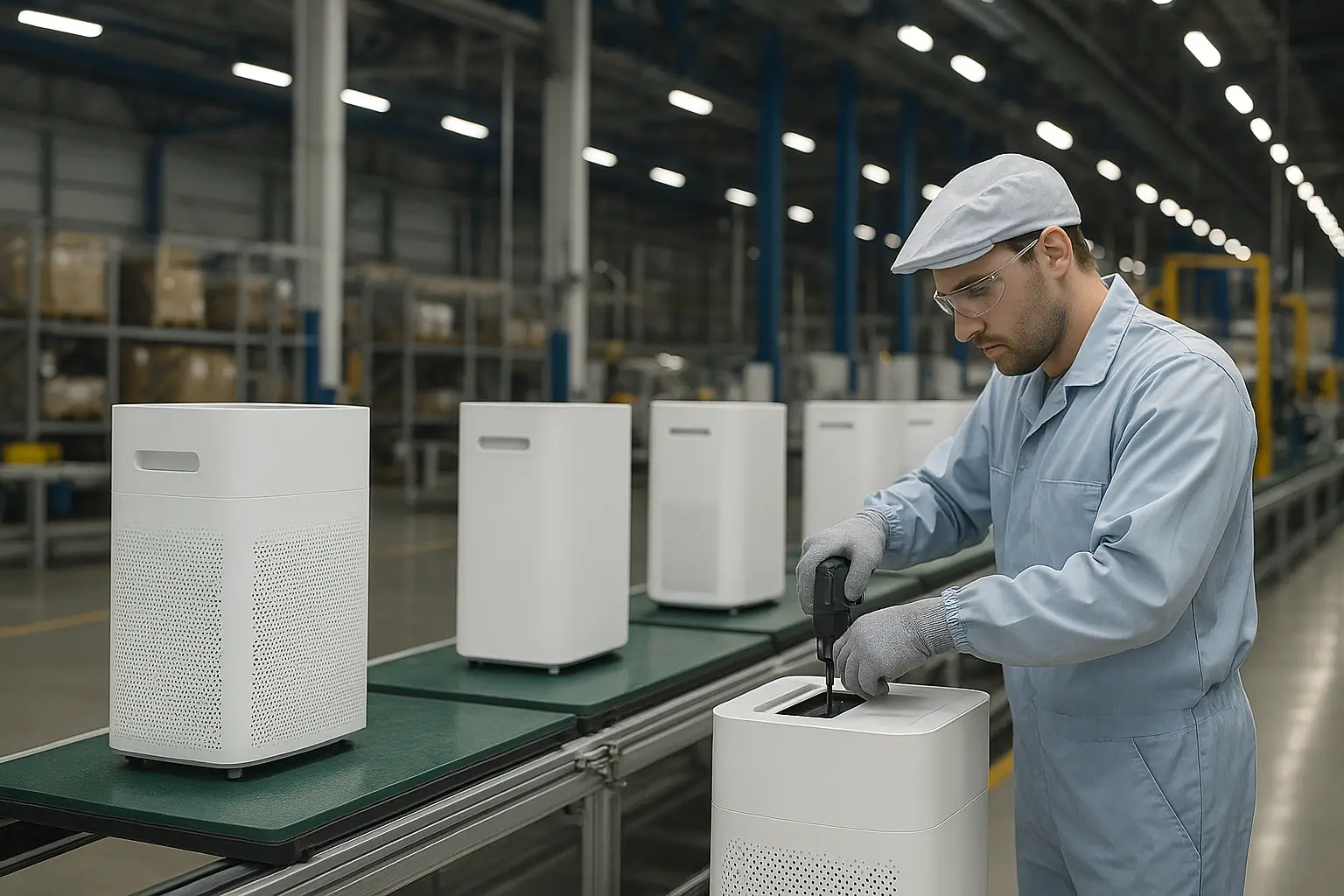
Regulatory & Risk Considerations
Beyond cost and lead-time, the regulatory environment and geopolitical stability of a manufacturing location are paramount for long-term business success, especially for products like air purifiers that are subject to stringent safety and environmental standards.
Compliance Simplicity
Manufacturing in Poland offers significant advantages in terms of regulatory compliance for EU-focused brands. As an EU member state, Poland adheres directly to all EU directives and regulations, including CE marking, RoHS (Restriction of Hazardous Substances), and WEEE (Waste Electrical and Electronic Equipment) directives. When an air purifier is manufactured in Poland, the manufacturer is considered an EU legal entity, which significantly streamlines the compliance process. The product can be directly placed on the EU market with minimal additional regulatory hurdles, reducing administrative burden and potential legal liabilities for the importing brand.
Turkey, while having technical alignment with many EU standards due to the Customs Union, places a greater legal and administrative burden on the importing EU brand. Although products manufactured in Turkey may meet CE standards, the responsibility for ensuring full compliance and handling all necessary documentation often falls more heavily on the EU importer. This can involve additional testing, certification, and ongoing monitoring to ensure that the products meet all specific EU requirements, adding complexity and potential costs. Furthermore, any divergence in regulatory interpretation or enforcement between Turkey and the EU can create compliance risks for brands.
Macroeconomic & Geopolitical Risk
Poland, as a stable member of the European Union and NATO, offers a predictable and secure business environment. Its currency, the Polish Złoty (PLN), while not part of the Eurozone, has demonstrated relative stability compared to currencies in less integrated economies. The political landscape is generally stable, and government policies are aligned with broader EU economic and trade objectives. This stability translates into lower operational risk for manufacturers, allowing for more accurate long-term financial planning and reduced exposure to sudden economic shocks.
Turkey, in contrast, presents higher macroeconomic and geopolitical risks. The country has experienced significant inflation and currency volatility (Turkish Lira - TRY) in recent years, which can drastically impact the cost of raw materials, labor, and energy, making long-term cost predictability challenging. Geopolitical tensions in the region can also affect supply chains, trade routes, and overall business confidence. While the Turkish government has implemented measures to stabilize the economy, the inherent volatility adds a layer of strategic risk that EU-focused brands must carefully consider. This volatility can lead to unexpected cost increases, supply chain disruptions, and a less favorable investment climate.
Supply Chain Ecosystem Maturity
The maturity and integration of the local supply chain ecosystem are crucial for efficient manufacturing, impacting everything from component sourcing to production agility and cost. A robust local supply chain reduces reliance on imports, mitigates risks, and can significantly shorten lead times.
Poland: Deep Integration with EU Supply Chains
Poland boasts a highly developed and deeply integrated supply chain ecosystem, particularly within the electronics and home appliance sectors. This is a direct result of its long-standing membership in the EU and its strategic position as a manufacturing hub for Western European markets. Manufacturers in Poland benefit from:
- Proximity to EU Suppliers: Easy and rapid access to a vast network of EU-based suppliers for critical components such as plastics, metals, electronic components (PCBs, sensors), and packaging materials. This proximity reduces transportation costs and lead times for inbound logistics.
- Established Logistics Infrastructure: As highlighted earlier, Poland's advanced road and rail networks facilitate efficient movement of goods within the country and across the EU, ensuring timely delivery of components to factories and finished products to distribution centers.
- Skilled Workforce and R&D Capabilities: The presence of major international manufacturers has fostered a skilled workforce and a growing R&D base, supporting local innovation and specialized component production.
- Reduced FX Risk for Components: Sourcing components within the Eurozone or from countries with stable currencies reduces exposure to foreign exchange rate fluctuations, contributing to more predictable production costs.
For air purifier brands, this means faster access to high-quality components, reduced inventory needs due to reliable supply, and greater flexibility in responding to design changes or market shifts. The seamless integration with the broader EU supply chain minimizes disruptions and enhances overall supply chain resilience.
Turkey: Strong Industrial Base, Higher Import Reliance
Turkey possesses a strong and diversified industrial base, with significant capabilities in manufacturing. However, for specialized components, particularly in the electronics sector, there is a higher reliance on imports. This reliance introduces several vulnerabilities:
- FX Sensitivity: The need to import a significant portion of subcomponents makes Turkish manufacturers highly sensitive to fluctuations in the Turkish Lira (TRY) against major currencies like the Euro or USD. A depreciation of the TRY can significantly increase the cost of imported components, directly impacting production costs and profitability.
- Trade Policy Shocks: Reliance on imports exposes the supply chain to potential trade policy changes, tariffs, or non-tariff barriers imposed by exporting countries. This can lead to supply disruptions and increased costs.
- Longer Lead Times for Imports: While Turkey has developed logistics networks, importing components from distant markets still involves longer lead times, customs procedures, and potential delays, which can cascade through the production process.
- Less Integrated Ecosystem: Compared to Poland's deep integration with the EU supply chain, Turkey's ecosystem, while robust for certain industries, may require more effort to establish reliable local sourcing for highly specialized air purifier components.
While Turkey's industrial capabilities are undeniable, the higher reliance on imported subcomponents, coupled with macroeconomic volatility, can lead to less predictable costs and greater supply chain risks for air purifier brands. This necessitates more robust inventory management and risk mitigation strategies for brands choosing Turkey as a manufacturing base.
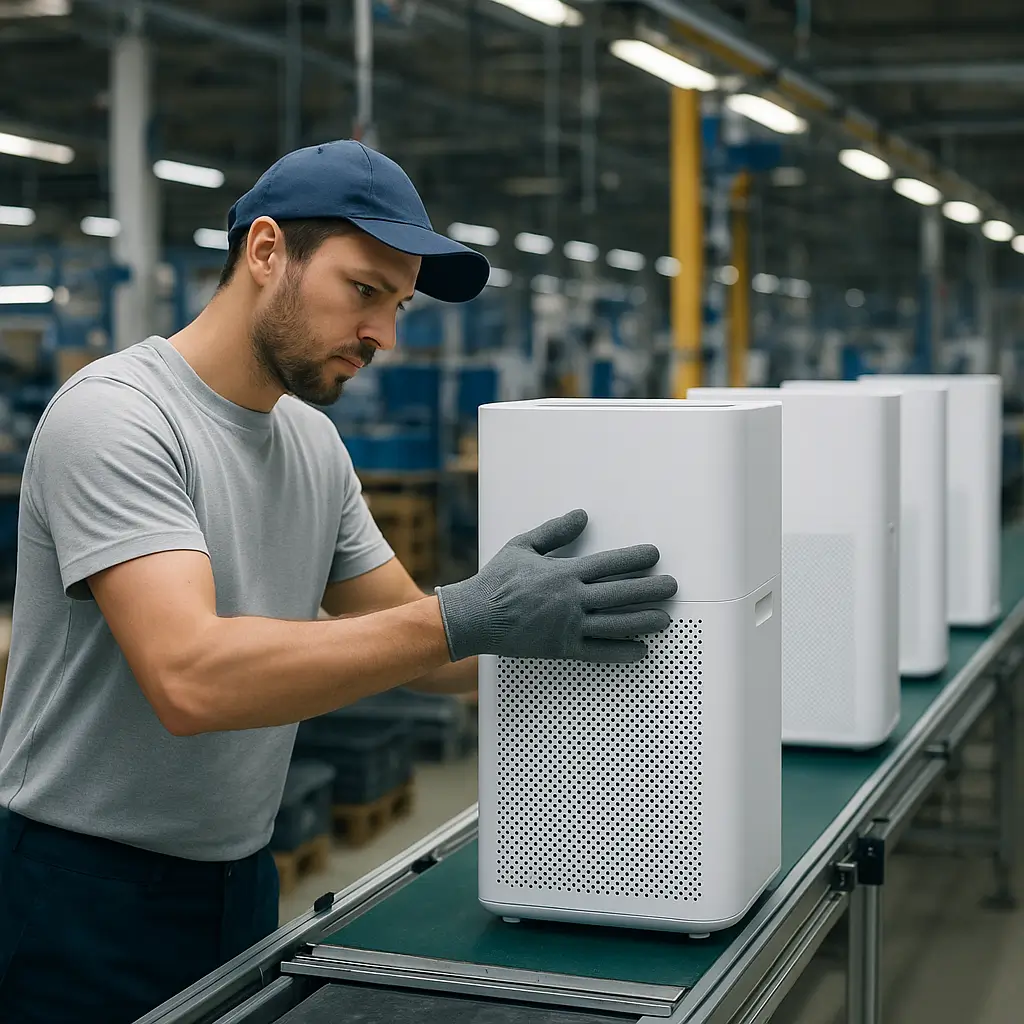
Comparative Scorecard
To provide a clear overview, the following scorecard summarizes the key criteria discussed, rating each country on a scale of 1 to 5 (1 being least favorable, 5 being most favorable) for an EU-focused air purifier brand.
| Critérios | Poland | Turkey | Summary |
|---|---|---|---|
| Custo do trabalho | 3 | 4 | Turkey is cheaper, but less predictable due to volatility. |
| Energy Cost | 3 | 5 | Turkey often has lower industrial energy prices, but with volatility risk. |
| Tax & Incentives | 5 | 3 | Poland offers stable, R&D/automation-focused relief. |
| Tariff Stability | 5 | 3 | Poland (EU) offers predictable tariffs; Turkey has variable surcharges. |
| Logistics Speed to EU | 5 | 2 | Poland offers fast, frictionless distribution within EU. |
| Customs Complexity | 5 | 2 | Poland is fully internal to the EU market; Turkey requires full border process. |
| Ecosystem Maturity | 5 | 4 | Poland’s EU-based suppliers reduce sourcing delays and FX risk. |
| Regulatory Burden | 5 | 3 | Easier CE marking and lower liability in Poland. |
| Macro/Political Risk | 4 | 2 | Turkey’s volatility significantly increases operational risk. |
| Total Strategic Score | 4.7 | 3.1 | Poland is the higher-value, lower-risk option for EU-focused brands. |
Case Study Playbooks
Examining the strategies of major players in the appliance and manufacturing sectors can provide valuable insights into the practical implications of choosing Poland or Turkey as a manufacturing base.
BSH in Poland: The Integration Model in Action
BSH Hausgeräte GmbH, one of the world's leading home appliance manufacturers (and owner of brands like Bosch and Siemens), has a significant presence in Poland. BSH operates six plants and two R&D centers across the country [20]. Their strategy in Poland exemplifies the "Integration Model" where manufacturing is deeply embedded within the EU single market for optimized efficiency and market responsiveness. By manufacturing in Poland, BSH benefits from:
- Just-in-Time (JIT) Delivery to EU: The seamless logistics and lack of customs barriers enable BSH to implement highly efficient JIT delivery systems to their distribution centers and retailers across Western Europe. This minimizes warehousing costs and responds rapidly to consumer demand.
- Optimized Supply Chain: Proximity to a robust network of EU suppliers for components and materials ensures a stable and cost-effective supply chain, reducing lead times and mitigating supply risks.
- Regulatory Simplicity: Operating within the EU regulatory framework simplifies compliance with standards like CE marking, allowing for quicker product launches and reduced legal complexities.
- Innovation and R&D: The presence of R&D centers in Poland allows BSH to leverage local talent and integrate innovation directly into their EU-focused production, benefiting from Polish tax incentives for R&D and automation.
BSH's long-term commitment and expansion in Poland underscore the strategic advantages of manufacturing within the EU for brands targeting the European market.
Arçelik in Turkey: The Gateway Model for Broader Reach
Arçelik A.Ş., a prominent Turkish multinational home appliance manufacturer (with brands like Beko and Grundig), leverages its manufacturing base in Turkey for a broader regional and global reach, not solely focused on the EU. Arçelik's approach aligns with the "Gateway Model," utilizing Turkey's lower direct costs and strategic geographical position to serve markets beyond just the EU, including the Middle East, Africa, and Asia. Key aspects of their strategy include:
- Cost Leadership: Arçelik benefits from Turkey's comparatively lower labor and energy costs, enabling them to maintain a cost-competitive production base.
- Broad Market Access: Turkey's location acts as a bridge to diverse markets, allowing Arçelik to serve a wide range of consumers with products tailored to regional preferences.
- Scale and Vertical Integration: Arçelik has invested heavily in large-scale production facilities and, in some cases, vertical integration to control costs and quality across their operations.
- Management of Macro Volatility: As a Turkish company, Arçelik has developed robust in-house capabilities to manage the macroeconomic volatility and currency fluctuations inherent in the Turkish market, a necessity for operating successfully from this base.
While Arçelik's success demonstrates the viability of manufacturing in Turkey, it also highlights the need for significant internal expertise in managing the complexities and risks associated with the Turkish economic environment, especially for companies with a global rather than purely EU-centric focus.
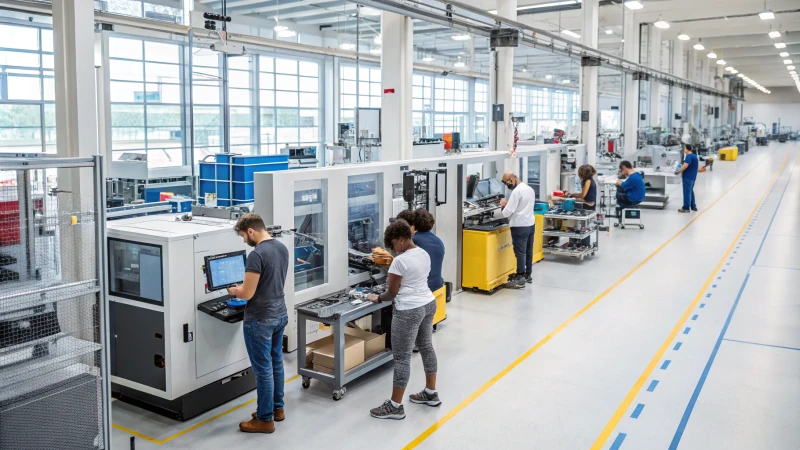
Strategic Recommendation
For an EU-focused air purifier brand like HisoAir, the choice of manufacturing location is a strategic decision that profoundly impacts long-term competitiveness, operational efficiency, and market responsiveness. Based on the comprehensive analysis of cost, lead-time, regulatory environment, and supply chain maturity, a clear recommendation emerges:
For an EU-focused air purifier brand that values:
- Fast delivery to major EU markets,
- Regulatory simplicity and streamlined compliance with EU standards,
- Supply chain resilience and predictable component sourcing, and
- Long-term cost predictability and stability in operational expenses,
Poland is the clear strategic choice.
Poland offers a manufacturing environment that is seamlessly integrated into the EU, providing frictionless access to a vast market, stable economic conditions, and a mature supply chain ecosystem. These factors collectively contribute to a lower total cost of ownership and a higher degree of operational certainty for brands whose primary market is the European Union.
Turkey remains a viable option only for brands with:
- A strict cost-leadership strategy where initial lower direct costs are prioritized above all else,
- O capacity to manage macro volatility, including significant currency fluctuations and inflation, through sophisticated financial hedging and risk management,
- Forte in-house customs & FX risk management expertise to navigate complex border procedures and mitigate currency exposure.
For brands that can absorb and manage these complexities, Turkey can offer a cost advantage. However, for the majority of EU-focused air purifier brands seeking reliability, speed, and regulatory ease, the strategic advantages of Poland far outweigh the headline cost savings offered by Turkey. The hidden costs and risks associated with Turkey's macroeconomic and geopolitical environment can quickly erode any initial cost benefits, leading to operational disruptions and reduced profitability in the long run.
Implementation Roadmap: Manufacturing in Poland
For air purifier brands ready to leverage Poland's strategic advantages, here is a practical roadmap for establishing manufacturing operations:
-
Location Scouting: Focus on industrial zones with established electronics and appliance manufacturing ecosystems. Key regions include:
- Wrocław (Lower Silesian Voivodeship): A major industrial hub with a strong presence of international manufacturers, excellent infrastructure, and access to a skilled workforce.
- Łódź (Łódź Voivodeship): Centrally located, with a developing logistics and manufacturing sector, offering good connectivity to all parts of Poland and the EU.
- Rzeszów (Subcarpathian Voivodeship): Known for its aviation industry, but also developing in other high-tech manufacturing sectors, potentially offering specialized engineering talent.
These locations provide access to talent, established supply chains, and robust logistics networks.
-
Incentive Optimization: Collaborate closely with the Polish Investment and Trade Agency (PAIH). PAIH is the first point of contact for foreign investors and can provide invaluable assistance in navigating the Polish investment landscape. Key incentives to explore include:
- Corporate Income Tax (CIT) Reliefs: Poland offers a competitive 19% CIT rate, with additional reliefs for specific activities.
- Robotisation Deduction: A significant incentive allowing businesses to deduct 50% of eligible costs for investments in industrial robots from their tax base, promoting automation and efficiency.
- Innovation Box (IP Box): A preferential 5% tax rate on income derived from qualified intellectual property rights, encouraging R&D and innovation in product development.
- Polish Investment Zone (PIZ): Special economic zones offering CIT exemptions for new investments, depending on the size of the investment and job creation.
PAIH can help structure these incentives to maximize benefits for your specific investment.
-
Supplier Network Integration: Leverage Poland's deep integration with EU electronics and appliance supply chains. Prioritize:
- Local Sourcing: Partner with local plastic injection molding companies, metal fabricators, and PCB (Printed Circuit Board) providers. Poland has a growing number of high-quality local suppliers that can reduce lead times and transportation costs.
- EU-based Distributors: For specialized electronic components, leverage established EU-based distributors like Digi-Key, Farnell, or Mouser. Their extensive networks ensure rapid access to a wide range of components with predictable delivery times and no customs complexities.
- Component Localization Strategy: Develop a strategy to gradually localize component sourcing within Poland or the broader EU to further enhance supply chain resilience and reduce FX exposure.
-
Logistics Planning: Design your logistics strategy to fully capitalize on Poland's excellent connectivity to the EU. Focus on:
- EU Road Freight Corridors: Utilize the extensive and efficient road network for just-in-time (JIT) delivery to key distribution centers in Germany and Western Europe. This is the fastest and most flexible mode for intra-EU transport.
- Intermodal Freight: Explore intermodal solutions (e.g., road-rail combinations) for larger volumes or longer distances within the EU to optimize cost and environmental impact.
- Proximity to Ports: While Poland is not a major sea freight hub for transcontinental shipping, its proximity to major German ports (e.g., Hamburg, Bremerhaven) and Baltic Sea ports (e.g., Gdańsk, Gdynia) can facilitate inbound logistics for raw materials from outside the EU.
Effective logistics planning will ensure your air purifiers reach the EU market with speed and efficiency, a key competitive advantage.
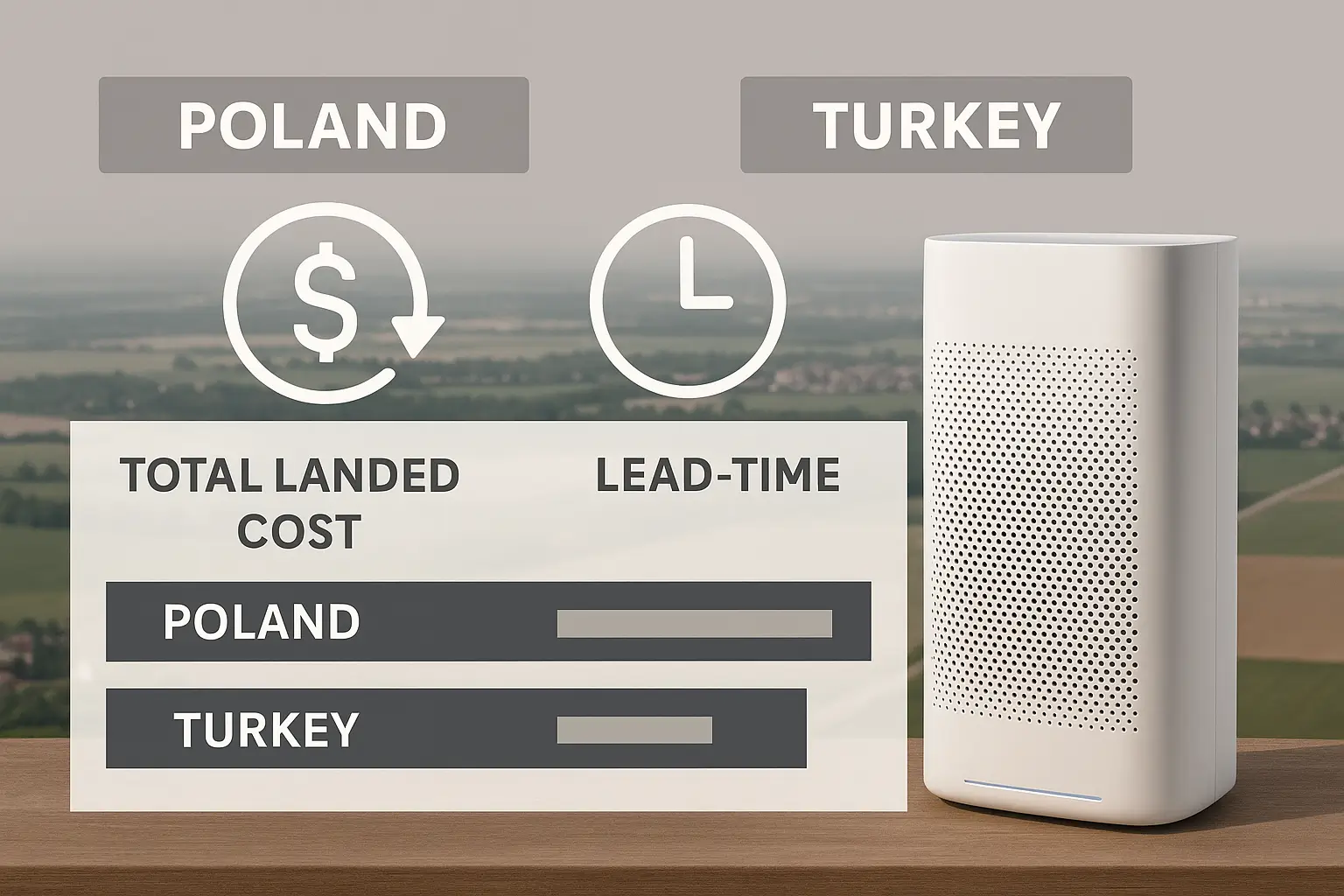
Conclusão
The decision between Poland and Turkey as a manufacturing base for EU-focused air purifier brands is not merely a matter of comparing direct costs. It is a strategic choice that weighs initial savings against long-term stability, predictability, and market access efficiency. While Turkey may offer lower headline labor and energy costs, these advantages are often offset by significant macroeconomic volatility, geopolitical risks, and the inherent complexities of customs procedures when exporting to the EU.
Poland, on the other hand, provides a manufacturing environment seamlessly integrated into the European Union. Its stable economic and political landscape, predictable regulatory framework, efficient logistics infrastructure, and mature supply chain ecosystem offer a compelling value proposition. For brands prioritizing fast delivery to major EU markets, streamlined compliance, supply chain resilience, and long-term cost predictability, Poland emerges as the unequivocally superior strategic choice.
In the competitive landscape of the European air purifier market, speed, certainty, and compliance are paramount. By choosing Poland, brands can not only optimize their operational efficiency but also build a more robust and responsive supply chain, ultimately securing a stronger competitive position and ensuring consistent delivery of high-quality products to their EU customers. In the race to deliver air purifiers across Europe with speed, certainty, and compliance, Poland wins by a wide margin.
